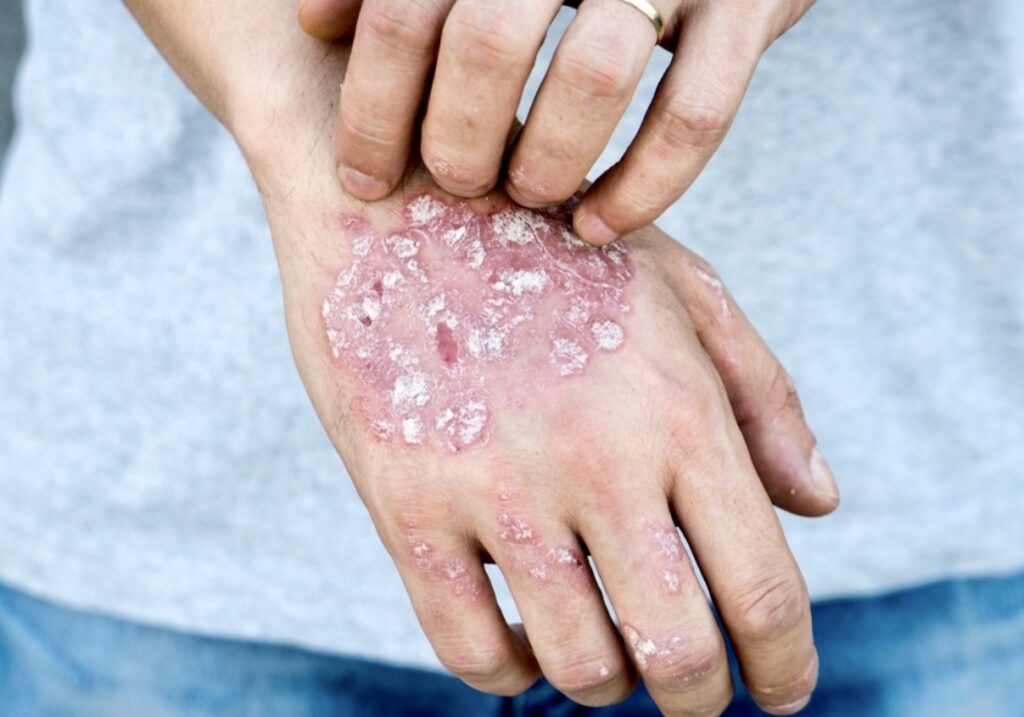Text by Henrylito D. Tacio
Photo sources: health.clevelandclinic.org, healthline.com, and abc.net.au
WHAT do scabies, sore eyes, and flu have one thing in common? According to the Department of Health (DOH), they are the common diseases that attack during the summer months. As such, get to know more about them and how to treat these diseases.
Let’s start with scabies, locally known as “galis aso.” Scabies is caused by an itch mite, known in the science world as Sarcoptes scabiel. The infestation spread easily from person to person on physical contact, often spreading them through an entire household. The mites or “kagaw,” just barely big enough to be seen, often spread when people sleep together.
Medical experts say the female itch mites tunnels under the topmost layer of the skin and deposit her eggs in burrows. Young mites (larvae) then hatch in a few days. The infection causes intense itching, probably from an allergic reaction to the mites.
“The hallmark of scabies is intense itching, which is usually worse at night,” says The Merck Manual of Medical Information. “The burrows of the mites appear as wavy lines up to half an inch long, sometimes with a tiny pimple at one end. The burrows are most intense in the webs between the fingers, on the wrists, at the elbows, in the armpits, around the nipples of women’s breasts, on men’s genitals (penis and scrotum), along the beltline, and over the lower part of the buttocks.”
The face is rarely infected, except in small children where lesions may appear as water-filled blisters. Over time, the burrows may become difficult to see because they’re obscured by inflammation induced by scratching.
Usually, the combination of itching and the burrows is all a doctor needs to make a diagnosis of scabies. However, a doctor can take a scraping from the burrows and look at it under a microscope to confirm the presence of mites.
Applying a cream containing permethrin or a solution of lindane can cure scabies. “Both are effective, but lindane tends to irritate the skin, is more toxic, and isn’t appropriate for young children,” notes the Merck manual. “Some scabies mites have become resistant to permethrin treatment.”
According to the health department, you can prevent scabies by taking a bath and changing clothes every day. If possible, avoid borrowing and lending your personal things such as towels, clothing, pillows, or blankets since, as stated earlier, you can get scabies upon skin contact with another person or through their things.

scabies from healthline.com 
Sore eyes from health.clevelandclinic
What about sore eyes? Actually, it is called conjunctivitis. Here, the conjunctiva – the transparent membrane covering the white of the eyeball and the inside of the eyelids – is inflamed. It is known as sore eyes or pink eyes due to the redness, swelling, and yellow pus that come with it.
Symptoms of sore eyes include the following: redness in one or both eyes, tearing (watery eyes), uncomfortable gritty sensation, itch, mild pain (in some cases), and dislike for bright light, although vision is normal. In some instances, there is a yellow discharge (pus) from the eyes – in the presence of bacterial infection.
The DOH says that sore eyes can be passed from one person to another by secretions in the infected person’s eyes. Actual infection happens through direct physical contact.
Contrary to common belief, you will not get sore eyes just by looking at an infected person’s eyes. You may get if, for instance, your hand touches the eyedropper of the stricken person, and your hands consequently rub your own eyes. You can also get sore eyes if you and the infected person share a swimming pool.
“The chlorine in swimming pools can cause sore eyes, but without the chlorine, bacteria would grow – and that could cause it, too,” says Dr. Robert Petersen, director of the Eye Clinic at Children’s Hospital in Boston, Massachusetts.
To avoid having sore eyes, the health department recommends that you avoid crowded places and avoid borrowing towels, eyedroppers, eye makeup applicators, and sunglasses. Also, don’t scratch your eyes if you are starting to feel the itch. Another recommendation: wear your sunglasses during strong winds to avoid irritating your eyes, especially during an epidemic.
However, if you have some sore eyes, get a little help. “Germ-caused sore eyes intensify when your eyes are closed. That’s why it tends to get worse at night when you sleep,” says Dr. Petersen. “To combat that, put any prescribed antibiotic ointment in your eyes before you go to bed. That way it will prevent crusting.”
Sore eyes are an easily treatable problem that will usually go away on its own in about a week. However, you should see a doctor if: after five days the infection is getting worse, not better; you have red-eye that is associated with significant eye pain, change in vision, or a copious amount of yellow or greenish discharge; and redness is caused by an injury to your eye. “Sometimes, infections can get in the eye and scratch the cornea, leading to an ulcer or even loss of vision or loss of your eye,” Dr. Petersen warns.
Meanwhile, influenza (or flu, for short) is also a highly contagious disease that can be spread in crowded areas. If your head throbs, your muscles ache, and your brow’s on fire, you’re probably been bitten by the airborne flu bug. And it will continue to bite until it’s good and ready to stop.
The flu virus might better be called the beast of a thousand faces. Although there are just three main types (influenza A, B, and C), they have unlimited ability to mutate into different forms. So while it’s true that about with one strain can give you immunity to that particular virus, its mutant offspring can lay you low next year – or even later this season.
But you and your family can greatly reduce your chances of getting the flu this summer by having a flu immunization. Flu immunization is good for everyone, but it is highly recommended to the very young and elderly, people with chronic illnesses such as heart disease, asthma, diabetes, and kidney problems, and those with lowered immunity.
The flu vaccine – produced from inactivated viruses and so you need not worry about it giving you the flu – is very effective and provides good immunity to a variety of strains of the flu virus. However, it will not protect you from the hundreds of viruses that cause the common cold. Often, people think the flu vaccine hasn’t worked because they develop a runny nose, sore throat, and cough, but in reality, they have a cold, not flu.

